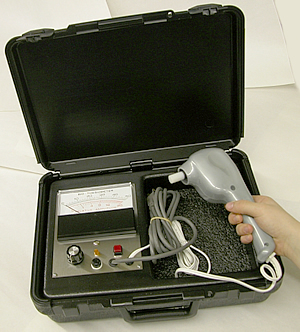Top Qs
Timeline
Chat
Perspective
Biothesiometry
Medical measurement of vibration perception From Wikipedia, the free encyclopedia
Remove ads
Biothesiometry is a noninvasive medical test used to quantify the perception of vibration by measuring its threshold.[1] It is used in neurology and electrophysiology to diagnose a number of conditions, like diabetic neuropathy and erectile dysfunction, where the vibration perception threshold (VPT) would be higher than average.[1][2] The numerical nature of the test can help stage the progression of disease or complications.

The test is done through a biothesiometer, which is composed of a handheld probe wired to a display unit. Both digital and analog types are commercially available, giving the reading on either a dial or a screen.
In a systematic review of screening methods for pediatric diabetic peripheral neuropathies, biothesiometry and fine microfilaments were shown to be the only diagnostic methods with high sensitivity and specificity.[3]
A systematic review showed that there is a strong co-relation between HbA1c values and Vibration Perception Test and could be a predictor for complications in the foot following Diabetic Peripheral Neuropathy.[4]
In a systemic review of modern devices available for the assessment and screening of peripheral neuropathy, digital devices were evaluated to measure tactile sensation, vibration perception, thermal perception and foot skin temperature.[5]
Remove ads
References
Wikiwand - on
Seamless Wikipedia browsing. On steroids.
Remove ads
